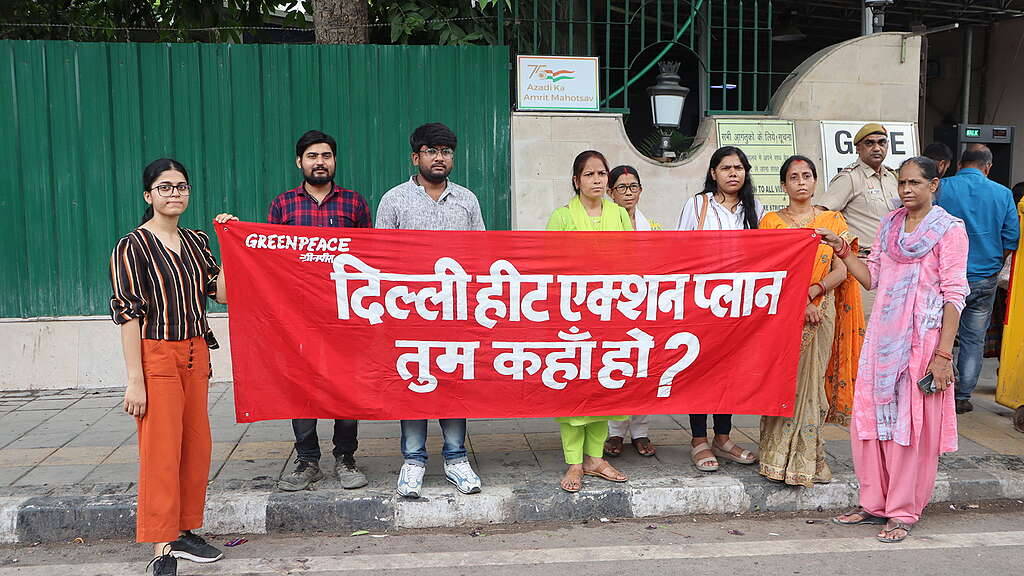
The formulation of the Delhi Heatwave Action Plan (HAP) by the Delhi Disaster Management Authority marks a significant preliminary step towards mitigating heat wave-related challenges in the city. Delhi, being one of the hottest cities in India, faces unique challenges due to its large population density and significant number of lower-income groups. Moreover, the intensive infrastructure development in Central, East, West, and North-East districts further elevates the risks through heat island formations.
Heat Action Plans (HAPs) are guidance documents formulated by state, district, and city administrations to aid readiness, response, and recovery from heat waves. These plans are drafted according to the 2016 National Disaster Management Authority guidelines and play a crucial role in allocating limited healthcare, financial, informational, and infrastructural assets to the most vulnerable sections of the population. Around 100 cities and 23 state governments have partnered with the National Disaster Management Authority (NDMA) to develop Heat Action Plans as adaptation measures for extreme heat events. The first Heat Action Plan was launched in 2013 by the Ahmedabad Municipal Corporation, serving as a template for other regions.
While being a step in the right direction, the Delhi HAP continues to face administrative and statutory challenges. We explore the importance of the HAP in addressing heatwave vulnerabilities, the need for tailored action strategies, the challenges of fragmented response, and the necessity of a coherent legal framework for effective implementation.
Vulnerability Mapping – A Welcome Step
The inclusion of vulnerability mapping within the plan is a welcome step, as it identifies both vulnerable groups and areas most affected by heatwaves, underscoring the importance of understanding its varied impacts on different communities. The International Labour Organisation had projected a 5.8% increase in working hours lost due to heat stress by 2030 in the country, equivalent to 34 million jobs.
Heat stress in Delhi is further amplified due to urban heat island effect. Studies show that urban heat island effect is most concentrated in commercial, densely populated areas of Delhi, namely Connaught Place (Central Delhi), Sitaram Bazar (Old Delhi), followed by residential/mixed areas like Noida (NCR-South East Delhi), Dwarka (South-West Delhi), Janakpuri (West Delhi), Kaushambi (East Delhi), Adarsh Nagar (North Delhi).
To ensure its effectiveness, the plan should extend beyond this initial mapping and incorporate detailed and tailormade action strategies for each of these identified categories. Recognizing that a uniform approach might not suffice, it becomes imperative to tailor interventions and responses according to the unique needs and vulnerabilities of each group and area. While vulnerability mapping is crucial, the plan must go further by delineating specific, targeted plans of action that align with the diverse requirements of the varied groups and areas, thus fostering a more comprehensive and adaptable approach.
Fragmented Response Strategies
One of the major challenges in implementing the HAP is the fragmentation of response strategies and departmental accountability. Key plans, roles, responsibilities, and mitigation strategies are spread across multiple government departments, some of which fall under the purview of the union government. This fragmentation can lead to incoherence and hinder effective coordination in addressing heat wave vulnerabilities. To overcome this challenge, there is a need for a more coordinated approach, where responsibilities are clearly defined, and collaboration between departments is strengthened to ensure a cohesive response.
Need for a Coherent Legal Framework
Another concern is the absence of a legal source of authority for the Delhi HAP, which raises questions regarding the bureaucratic incentive for implementation and the accountability of implementing agencies. To address this issue, it is crucial to establish a systematic legal framework that outlines the mandates, guidelines, and penalties for non-compliance. Such a framework would not only provide the necessary authority but also ensure accountability and enhance the effectiveness of the plan.
Sustainable Funding for Implementation
The Delhi HAP lacks clarity on the sources, nature, and agency responsible for funding its implementation. This uncertainty is particularly concerning given the size of Delhi’s population. Delhi has about half its population living in informal settlements like JJ (Jhoogi-Jhopdi) clusters, slum designated areas, and resettled colonies, which may be disproportionately vulnerable to the impacts of heat. It is therefore imperative to identify sustainable funding sources and mechanisms to ensure successful interventions. Allocating funding for long-term infrastructure changes, healthcare facilities, and essential services should be a critical aspect of the plan to safeguard the most vulnerable communities.
In conclusion, the formulation of the Delhi Heat Action Plan represents a pivotal step towards confronting the unique challenges posed by heatwaves in this vibrant city. While the plan faces administrative hurdles and requires a more tenacious approach, its foundation in vulnerability mapping and community-specific strategies holds promise for a more resilient future. By prioritizing hotspot areas, bridging departmental divides, and establishing a solid legal framework, the plan can transform into a comprehensive blueprint for safeguarding the wellbeing of Delhi’s diverse population. As these steps are taken, backed by concerted efforts and sustainable funding, the city can aspire to not only mitigate heatwave vulnerabilities but also set a model for other regions to follow. With a commitment to adaptability, innovation, and collaboration, there is every reason to believe that Delhi’s journey towards a cooler, safer future is indeed attainable.





Discussion
I am Pure Vegetarian And Quite Smoking 3 Years Ago. I Never Use Air Conditioner And Car. This Is My Least Contribution To Save Our Planet/Universe Earth. Go Green. Save Environment.